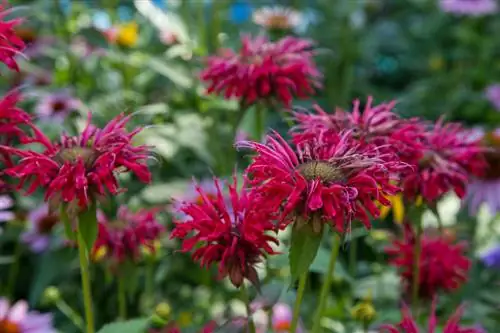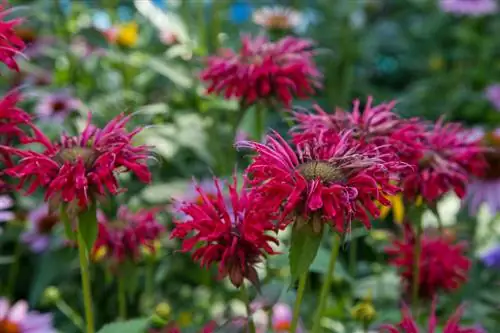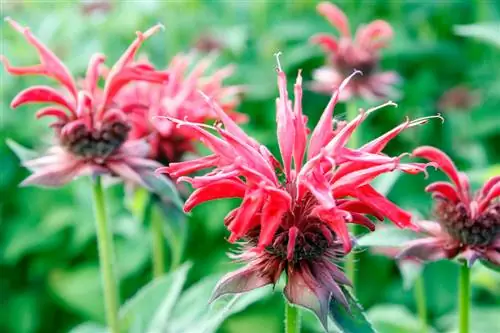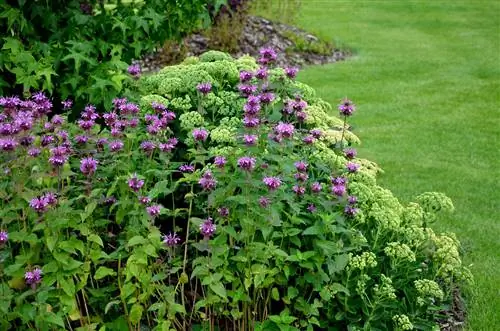- Author admin [email protected].
- Public 2023-12-16 16:46.
- Last modified 2025-06-01 06:02.
Monarda didyma, the scarlet Indian nettle, originally from the prairies of North America, is a robust summer bloomer that is perfect for colorful herbaceous beds and edges. The perennial, also known as golden balm, does not require too much care - not even when it comes to various pruning measures.

When and how should you cut the Indian nettle?
Cutting Indian nettle: Before winter, cut back the dried parts of the plant to just above the ground. Take cuttings in early summer to propagate the perennial. Immediately remove parts of the plant affected by powdery mildew.
Cut back Indian nettle before winter
It is not necessary to regularly cut the Indian nettle into shape. Instead, the plant should be cut off just before winter to just over a hand's width above the ground as soon as all parts of the plant have dried out. No further winterization measures are necessary. In principle, this pruning can also be carried out in spring, but then the appropriate time must be carefully considered. If you cut back the Indian nettle too late, this can delay the sprouting.
Cut cuttings
You can also cut cuttings in early summer and thus propagate the perennial. Half-ripe shoots are preferably used.
- Cut off shoots that are about 10 to 15 centimeters long.
- These should not bloom or have any buds.
- Flowers and buds hinder rooting.
- Make the cut at a slight angle, this will make it easier for the seedling to absorb water later.
- Remove all but the top two leaves.
- Use clean (preferably disinfected) and sharp scissors when cutting.
- Plant the cuttings in potting soil.
- Keep the substrate slightly moist.
The young, rooted Indian nettles are overwintered frost-free the following winter and are not planted outdoors until spring. They also need light winter protection for the next two to three winters, as their winter hardiness still has to develop.
Be careful of powdery mildew - remove affected plant parts
Although the Indian nettle is a robust plant, it is quite susceptible to powdery mildew - especially if the perennials are too crowded or the soil is too dry. Infected plant parts - these can be recognized by the whitish-gray coating - should be cut off immediately and carefully disposed of with household waste. Please do not compost these, otherwise the fungus will spread to other plants. In addition, the cutting tool should be thoroughly disinfected after use.
Tip
You can also cut off the leaves of the Indian nettle and use them dried to flavor teas. Also known as “Wild Bergamot,” the plant has an intense, citrus-like scent that some describe as being similar to mint.






